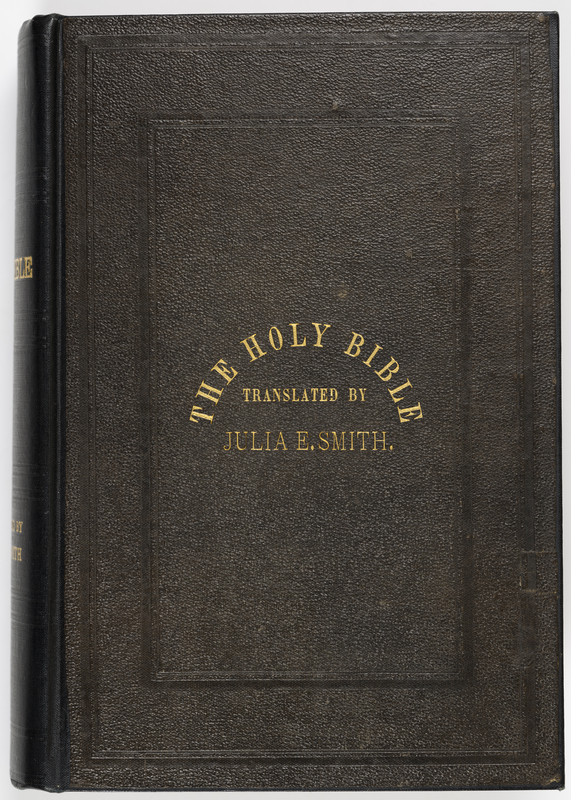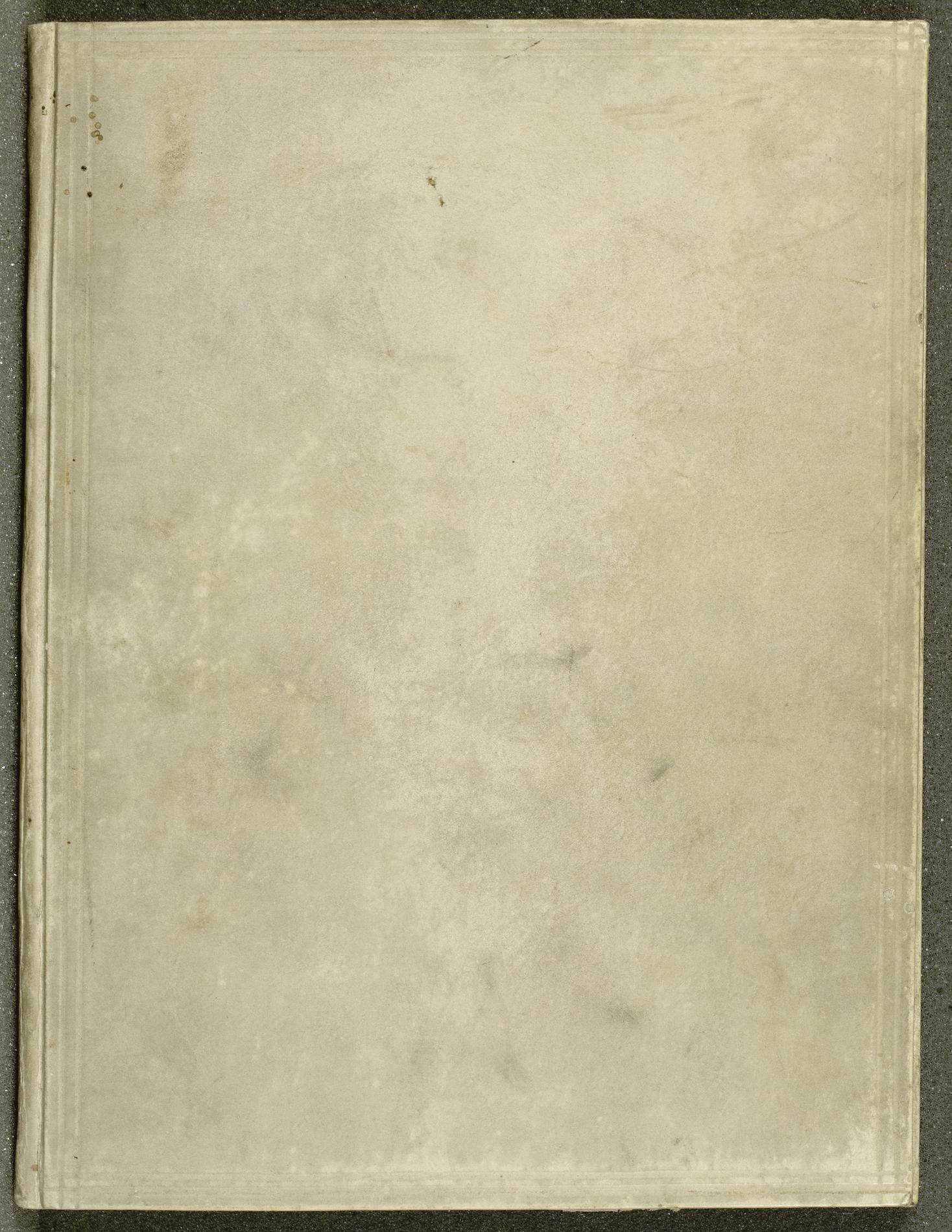Search
-
![A historiated woodcut border of the title page of Moriae encomium : nunc postremum ab ipso autore religiose recognitu[m] una cum alijs aliquot libellis, no[n] minus eruditis quam amoenis, quorum omniu[m] titulos proxima pagella loquetur. The border features the personifications of several deadly sins and cardinal virtues, including Pride, Greed, Justice, Prudence, and Hope. At the bottom of the border, the personified Fortuna rides a horse as a skeleton shoots a man with an arrow.](https://s3.us-west-2.amazonaws.com/omekacloud-main/large/P_00001528875_P003/1522ERAS_00001528875_P003_PROD.jpg) Still image
Still imageHistoriated title page of Moriae encomium : nunc postremum ab ipso autore religiose recognitu[m] una cum alijs aliquot libellis, no[n] minus eruditis quam amoenis, quorum omniu[m] titulos proxima pagella loquetur
A historiated woodcut border of the title page of Moriae encomium : nunc postremum ab ipso autore religiose recognitu[m] una cum alijs aliquot libellis, no[n] minus eruditis quam amoenis, quorum omniu[m] titulos proxima pagella loquetur. The border features the personifications of several deadly sins and cardinal virtues, including Pride, Greed, Justice, Prudence, and Hope. At the bottom of the border, the personified Fortuna rides a horse as a skeleton shoots a man with an arrow. -
![A historiated woodcut border of the title page of Condemnatio Doctrinalis libror[um] Martini Lutheri featuring floral decorations, cherubs, fruits, cornucopias, baskets, and greenmen.](https://s3.us-west-2.amazonaws.com/omekacloud-main/large/P_300000219230_P007/1520UNIV_300000219230_P007_PROD.jpg) Still image
Still imageHistoriated title page of Condemnatio Doctrinalis libror[um] Martini Lutheri
A historiated woodcut border of the title page of Condemnatio Doctrinalis libror[um] Martini Lutheri featuring floral decorations, cherubs, fruits, cornucopias, baskets, and greenmen. -
 Still image
Still imagePapal Arms of Leo X
The title page of a printed version of the papal bull against Martin Luther featuring the papal arms of Leo X which incorporates the Medici family crest. -
 Still image
Still imageArchitectural historiated title page of Philippi Melanchthonis Sermo habitus apud iuuentute[m] Academiae Vuittenberg. ; De corrigendis adulescentiae studijs. Rodolphus Agricola Phrisius de studiorum omnium colluuie, uidelicet Iuris, Medicinae, Physices, & Theologicae
An architectural historiated woodcut border on the title page of the second printing of Philip Melanchthon's inagural address to the Wittenberg faculty. The border features the printer's device of Johann Froben, a shield with a caduceus, surrounded by a wreath. At the bottom is a scene of Salome requesting, and recieving, the head of John the Baptist. -
 Still image
Still imageMan of Sorrows
A woodcut depicting Jesus as the "man of sorrows" (Isaiah 53:3), surrounded by the instruments of his suffering and death, including a spear, cross, hammer, scourge, and crown of thorns, as three die sit stacked at his feet. The phrase "Ecce homo" appears behind the form of Jesus. -
 Still image
Still imageSanctus Hieronymus interpres biblie
A woodcut depiction of Saint Jerome seated at his desk with two books before him, one with Greek letters and another with Latin, representing his work translating the Bible. Jerome has turned from the books to remove a thorn from the paw of a lion, a popular story from the saint's life. -
 Text
TextA study of the opportunities afforded for the education of negroes in Atlanta, Georgia
Watkins, Alfred Arthur, 1896-Summary: A thesis written in partial fulfillment of the requirements for the degree of Bachelor of Divinity at the Candler School of Theology on the educational opportunities for African American children in Atlanta, Georgia, including an assessment of curriculum, teaching staff, and school buildings. -
 Text
TextThe Holy Bible : containing the Old and New Testaments
Summary: It is claimed to be the first English Bible translated by a woman. -
 Text
TextThe Holy Bible : containing the Old and New Testaments
Summary: It is claimed to be the first English Bible translated by a woman. -
 Text
TextIóng sim sîn si
Burns, William Chalmers, 1815-1868Summary: Chinese hymns in Amoy dialect (Romanized). -
 Text
TextThe doctrines and discipline of the Methodist Episcopal Church in America
Methodist Episcopal ChurchSummary: -
 Text
TextTeütsche Letaney, vmb alles anligen der Cristenlichen gemayn
Luther, Martin, 1483-1546Summary: This is Luther's reinstatement of the Litany of "All Saints", containing both the musical notation and German text of the antiphons. -
 Text
TextChriste[n]lich Antwurt Burgermeisters vnd radts zů Zürich, dem hochwirdigen [et]c. Herren Hugen, Byschoffe zů Costantz, über die vnderricht beyd[er] articklen der Bilder vn[d] der Messz inen zůgeschickt ...
Zurich (Switzerland). StadtratSummary: This is a response, written by Zwingli and adopted by the Council of Zurich, to a warning letter from Hugo von Hohenlandenberg (1457-1532), Bishop of Constance, about the destruction of images (Simulacra) and the reform of the Holy Mass. The bishop argued that the Bible forbade only heathen images; Christian imagery was entirely licit and its use sanctioned by the Council of Nicaea. The book was circulated at the Diet of Lucerne in April 1524 but did not reach Zurich until early June. -
 Text
TextSerenissimi ac potentissimi Regis Anglie, Christiane fidei defensoris inuictissimi, ad illustrissimos ac clarissimos Saxoni[a]e principes, de coercenda abigendaq[ue] Lutherana factione, & Luthero ipso epistola : Item illustrissimi principis Ducis Georgii ad eundem Regem rescriptio
Henry VIII, King of England, 1491-1547Summary: Response by King Henry VIII of England to Luther's attack on his book, "Assertio septem sacramentorum", on the seven sacraments of the Catholic Church. This printing was issued in Leipzig by Hieronymous Emser, early opponent of Luther, with a reply by his ruler, Duke George of Saxony, and dedicated by Emser to Johann von Schleinitz, bishop of Meissen. -
 Text
TextVon der Freyhayt Aines Christen menschen
Luther, Martin, 1483-1546Summary: This is the third of Luther's three great reformation tracts of 1520. Addressed to Pope Leo X, this work is a discourse on the freedom of the will, turning on the paradox: A Christian is free, lord over all things, subject to no one. A Christian is a bounden servant of all, and subject to everyone. This is the fourth printing of Luther's own German translation. -
 Text
TextEin Sermon oder Predig von dem ablasz vnd gnade
Luther, Martin, 1483-1546Summary: An early sermon by Luther on Indulgences and Grace. First appearing in 1518, this work went through fully fourteen printings in that year alone.




